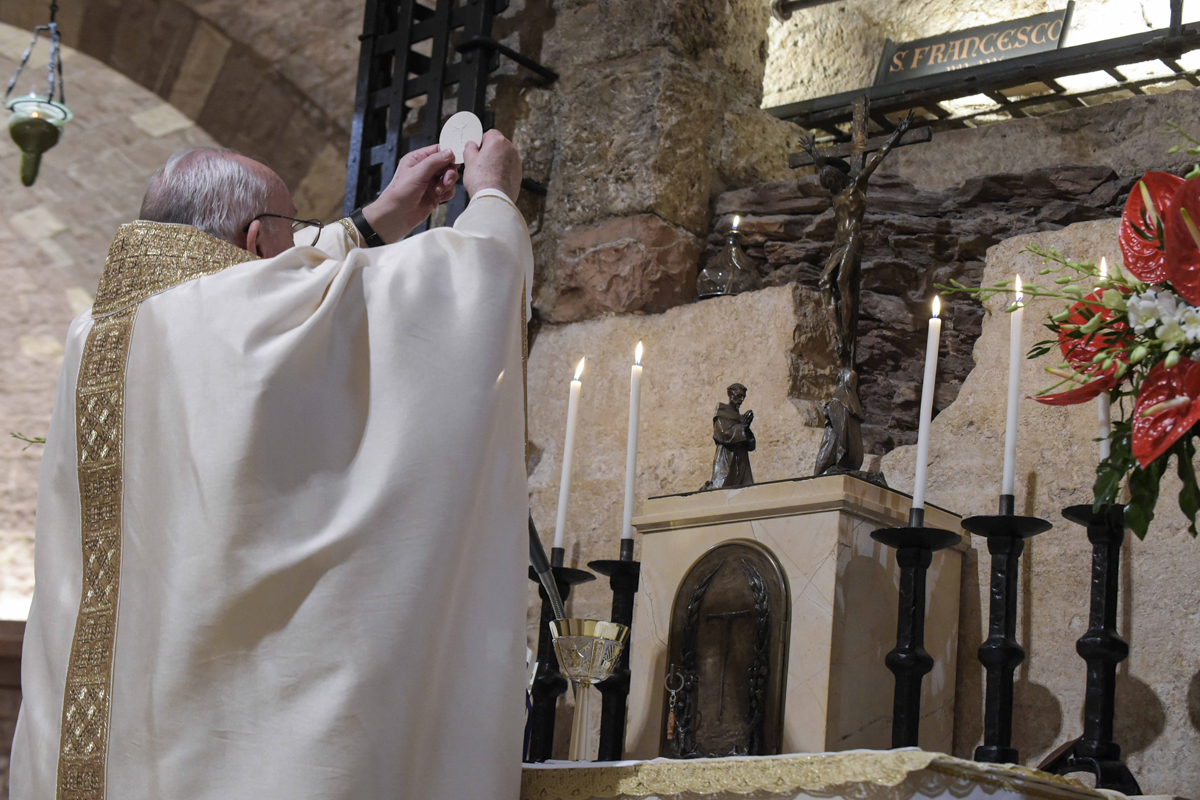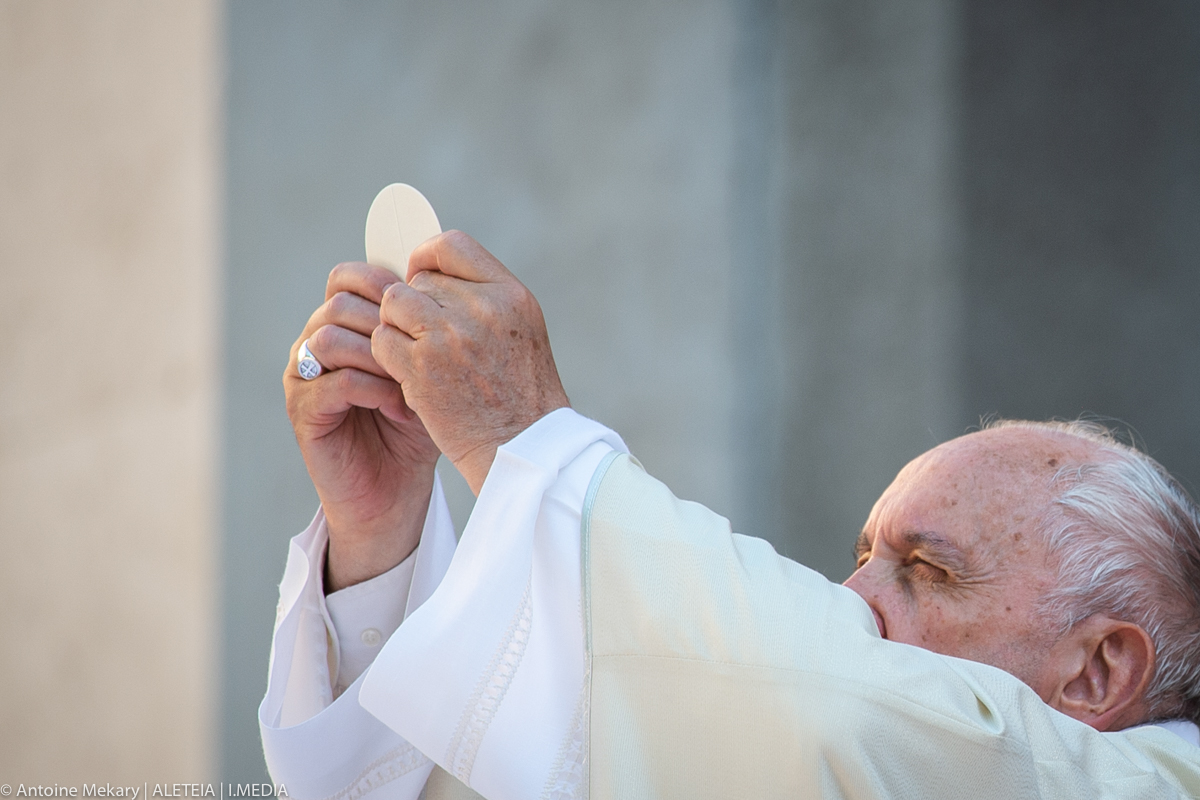Pope Francis continued his teaching on prayer by taking up on February 3 the subject of liturgy.
The insights can lead to a greater appreciation of the Mass.
Reflect with these 10 excerpts:
~
The Constitution Sacrosanctum Concilium of the Second Vatican Council represents a pivotal point in this long journey. It comprehensively and organically reaffirms the importance of the divine liturgy for the life of Christians, who find therein that objective mediation required by the fact that Jesus Christ is not an idea or a sentiment, but a living Person, and His Mystery a historical event.
~
The prayer of Christians passes through tangible mediations: Sacred Scripture, the Sacraments, liturgical rites, the community. In Christian life, the corporeal and material sphere may not be dispensed with, because in Jesus Christ it became the way of salvation. We might say that we must pray with the body too: the body enters into prayer.
~
The liturgy, in itself, is not only spontaneous prayer, but something more and more original: it is an act that founds the whole Christian experience and, therefore, also prayer. It is event, it is happening, it is presence, it is encounter. It is an encounter with Christ.
~
A Christianity without a liturgy, I dare say, is perhaps a Christianity without Christ. Without Christ in full.
~
The Catechism explains it very well; it says: “Prayer internalises and assimilates the liturgy during and after its celebration” (ibid.). Many Christian prayers do not originate from the liturgy, but all of them, if they are Christian, presuppose the liturgy, that is, the sacramental mediation of Jesus Christ. Every time we celebrate a Baptism, or consecrate the bread and wine in the Eucharist, or anoint the body of a sick person with Holy Oil, Christ is here! It is He who acts and is present just as He was when He healed the weak limbs of a sick person, or when at the Last Supper He delivered His testament for the salvation of the world.
~

The prayer of the Christian makes the sacramental presence of Jesus his or her own. What is external to us becomes part of us: the liturgy expresses this even in the very natural gesture of eating.
~
The Mass is always celebrated, and not only by the priest who presides over it, but by all Christians who experience it. And the centre is Christ! All of us, in the diversity of gifts and ministries, join in His action, because He, Christ, is the Protagonist of the liturgy.
~
When the first Christians began to worship, they did so by actualizing Jesus’ deeds and words, with the light and power of the Holy Spirit, so that their lives, reached by that grace, would become a spiritual sacrifice offered to God. This approach was a true “revolution”.
~
Life is called to become worship to God, but this cannot happen without prayer, especially liturgical prayer. May this thought help us all when we go to Mass: I go to pray in the community, I go to pray with Christ who is present.
~
When we go to the celebration of a Baptism, for example, it is Christ who is there, present, who baptizes. “But Father, this is an idea, a figure of speech”: no, it is not a figure of speech. Christ is present, and in the liturgy you pray with Christ who is beside you.

